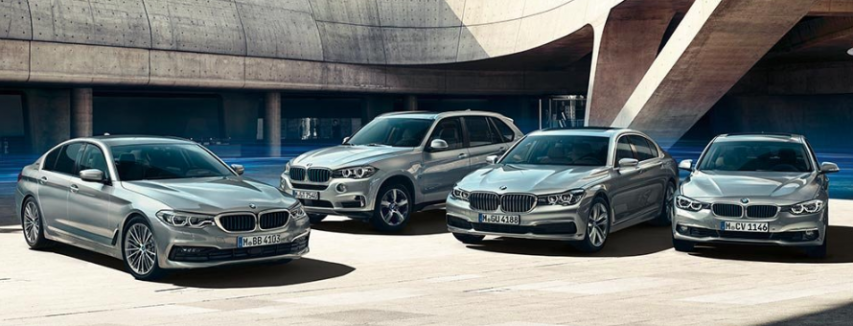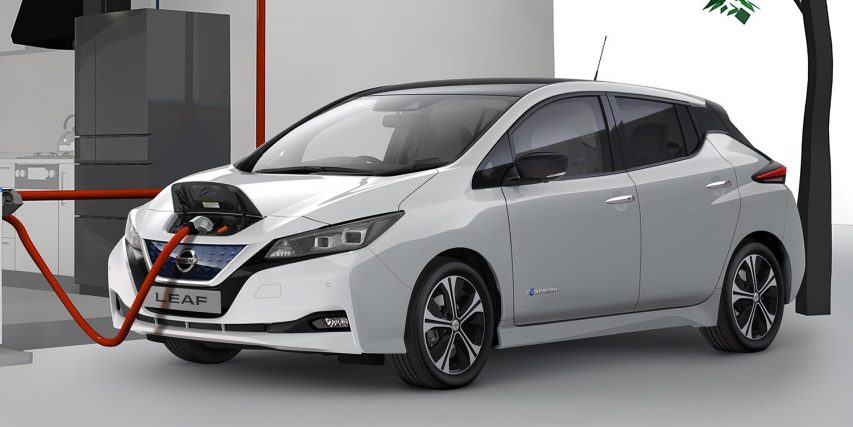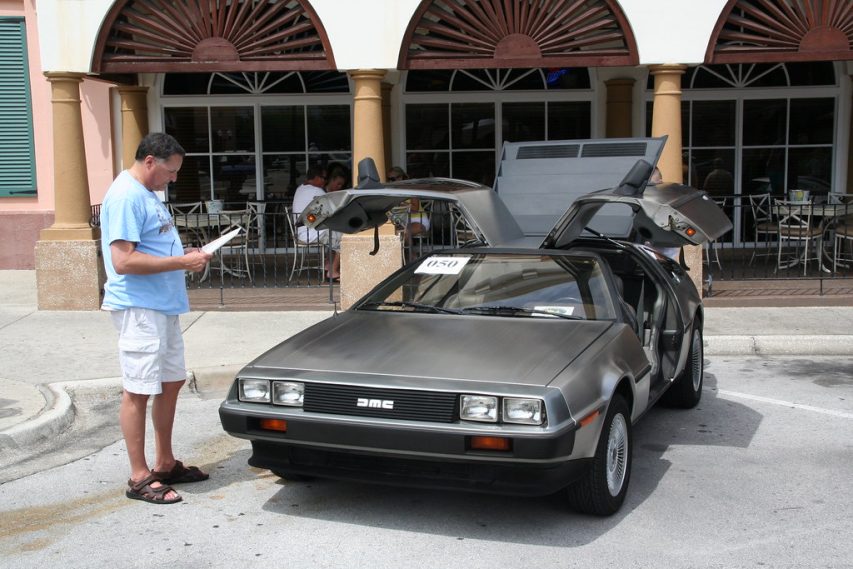Big Car old account
Published 26 Feb 2019To help me continue producing great content, please consider supporting me: https://www.patreon.com/bigcar
Help support my channel through these Amazon UK affiliate links:
Range Rover t-shirt: https://amzn.to/2WVHiLX
Land Rover baseball cap: https://amzn.to/2D4DP67
Range Rover diecast model car: https://amzn.to/2U3tTzk
Range Rover keyfob: https://amzn.to/2D4HmRQIf Maria Von Trapp had driven a Range Rover, she’d have climbed every mountain, forded every stream and driven to every Austrian folk festival with the entire Von Trapp family singers in the back. Her and the Captain would have been able to roll up to the fanciest Salzburg dinner party in their finest glad rags after a day yodeling sweet nothings to each other on top of a mountain.
The Range Rover is the ultimate go-anywhere luxury SUV. It was born out of Rover’s desire to sell more cars in the USA, and its design was a complete accident. So how did a company known for saloon cars and agricultural off-roaders invent a car that created a brand-new market segment?
Much credit for this video has to go to aronline.co.uk for their excellent articles.
#RangeRoverClassic
November 5, 2020
The Range Rover Story
August 19, 2020
He calls it “unintended consequences”. I disagree … these consequences are very much intended
Brad Polumbo is being far too generous to Californian politicians by saying the impending collapse of the state’s entire gig economy was not the intended result of passing “worker protection” laws that penalized success:
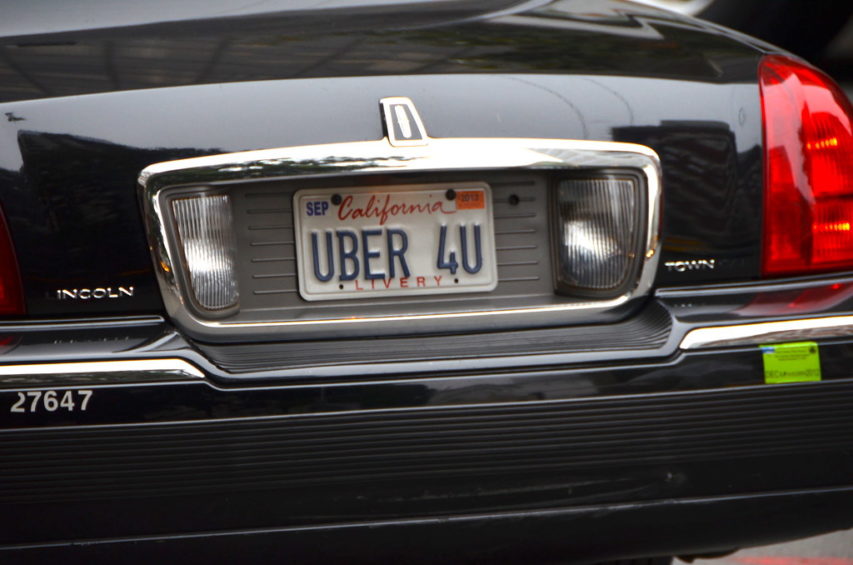
UBER 4U by afagen is licensed under CC BY-NC-SA 2.0
This Friday, Uber and Lyft are set to entirely shut down ride-sharing operations in California. The businesses’ exit from the Golden State will leave hundreds of thousands of drivers unemployed and millions of Californians chasing an expensive cab. Sadly, this was preventable.
Here’s how we got to this point.
In September of 2019, the California state legislature passed AB 5, a now-infamous bill harshly restricting independent contracting and freelancing across many industries. By requiring ride-sharing apps such as Uber and Lyft to reclassify their drivers as full employees, the law mandated that the companies provide healthcare and benefits to all the drivers in their system and pay additional taxes.
Legislators didn’t realize the drastic implications their legislation would have; they were simply hoping to improve working conditions in the gig economy. The unintended consequences may end up destroying it instead.
Here’s why.
AB 5 went into effect in January, and now, a judge has ordered Uber and Lyft to comply with the regulation and make the drastic transformation by August 20. Since compliance is simply unaffordable, the companies are going to have to shut down operations in California.
Their entire business model was based upon independent contracting, so providing full employee benefits is prohibitively expensive. Neither Uber nor Lyft actually make a profit, and converting their workforce to full-time employees would cost approximately $3,625 per driver in California. As reported by Quartz, “that’s enough to boost Uber’s annual operating loss by more than $500 million and Lyft’s by $290 million.”
Essentially, California legislators put these companies in an impossible position. It makes perfect sense that they’d leave the state in response. It’s clear that despite the good intentions behind the ride-sharing regulation, this outcome will leave all Californians worse off.
July 15, 2020
Donald Shoup, the “Sir Isaac Newton of parking” or an “‘academic bottom-feeder’ who found a wonderful, rich ecological niche down there in the depths”
Colby Cosh, after taunting Ontarians yet again over our just-barely-past-Prohibition views on alcohol in public places, goes on to praise the work of UCLA economist Donald Shoup and his insights into the economics of parking:
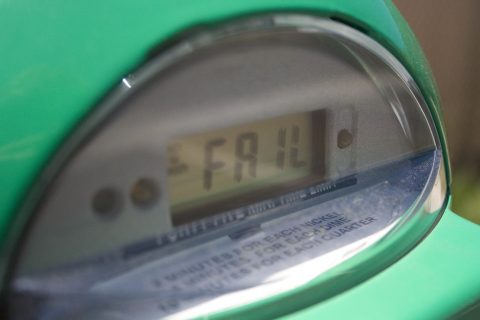
“Parking meter FAIL” by kingdesmond1337 is licensed under CC BY-NC-SA 2.0
Parking — boring topic, ain’t it? Shoup latched onto it as a young-ish man because he was a follower of Henry George (1839-1897), the intriguing “single tax” economic theorist of the 19th century. George favoured a tax on the unimproved value of land parcels as a way of socializing pure rent (the value earned from occupying a mere location) and encouraging development. It is a concept that many economists still like, although it is potentially difficult to apply at scale. The widely used concept of tax increment financing is one example of Georgism in practice.
Shoup started out trying to fit parking spaces into the Georgist picture, but the boring topic was so underexamined that he found himself having to build a general theory of parking. He quantified the relationship between parking and traffic, finding that people “cruising” for parking spots were more destructive than anyone had imagined, and he inspired waves of research into the hidden market values of parking spots, which are rarely bought or sold in their own right. He happily describes himself as an “academic bottom-feeder” who found a wonderful, rich ecological niche down there in the depths.
Shoup has spent decades travelling the world and preaching against the concept of free parking, often meeting with bad-tempered resistance. Nevertheless, he has made a lot of headway in the world of urban planning. Any economist can see immediately how bundling a “free” parking space with an apartment or a job might be inefficient. The renter or homeowner has to pay a hidden extra cost for an amenity he might not choose to use, and the commuter is being given an incentive to drive to work — an incentive whose cash value he might prefer to keep. Shoup soon found, on empirical investigation, that most urban parking lots show signs of less-than-optimum use.
[…]
Of course, too little parking is as much of an efficiency problem as too much, which is why Shoup and his followers want parking to be priced wherever possible: if more is really needed, let a market create it. (To my eyes he has at least as much Hayek in him as Henry George.) In the era of Uber and smartphones, it is a lot easier to imagine a fully Shoupista world in which prices for parking spots update in real time and drivers look up prices at or near their destination before setting out.
June 15, 2020
QotD: The very first “road trip”
Germany’s love for the automobile began with a road trip from nearby Mannheim to the town of Pforzheim, less than 30 miles from Stuttgart. In 1885, Karl Benz had invented his first Motorwagen, a three-wheeled vehicle with a gas-powered engine of his own design. One of the first times he managed to get it started, he drove it straight into his laboratory wall.
By 1888, he had a working prototype, which had successfully driven down a road. The now-patented Motorwagen had no gears and could not go up hills, but it worked. One morning, Benz’s wife Bertha decided to take the car on its first extended road trip. With her two sons, she pushed the car out of the garage, until it was far enough from the house that they could get it started without waking her husband.
Bertha Benz had a destination in mind — her parents’ house in Pforzheim, about 65 miles from her home. Following roads meant for wagons, she and her sons started the drive — the first recorded road trip in a car.
There were challenges. A pipe clogged; Benz cleaned it with her hat pin. A wire shorted; she insulated it with her garter. They needed more fuel; she convinced a pharmacist to sell her an unusually large amount of the gas the car used. When the brakes started wearing out, she had them shod with leather at a cobbler. When she reached a hill, she had the boys push (along with local help).
By the end of the day, the Benzes had reached Pforzheim, where Bertha telegraphed her husband that they were safe. After a few days’ visit, they drove back home to Mannheim.
Ten years ago, Germany created an official Bertha Benz Memorial Route, marking her historic road trip. Part of Bertha Benz’s motivation was to sell potential customers on the advantage of automobiles; although it took another decade or so, people eventually bought into this transportation revolution.
Sarah Laskow, “An 1888 Road Trip Sparked Germany’s Romance With Cars”, Atlas Obscura, 2018-02-28.
June 12, 2020
March 1, 2020
“When you’re driving a fancy car, you’re an avatar for everyone else’s bad boss, useless trust-fund roommate, or absent workaholic father”
At Car and Driver, Ezra Dyer confirms what most of us already suspected about the folks who drive expensive rides:
Excuse us if you’ve already devoured the latest volume of the Journal of Transport & Health, but the March issue contains the results of a novel experiment that tested a cherished automotive stereotype. The study is entitled “Estimated Car Cost as a Predictor of Driver Yielding Behavior for Pedestrians,” but you can think of it as, “Are BMW drivers really jerks or what?”
Okay, so it was more nuanced than that. The authors of the study sent four pedestrians — black female, black male, white female, white male — to crosswalks in the Las Vegas area to see how many drivers would yield. The overall results were pretty dismal, with a yield rate of only about 28 percent out of 461 cars. Cars yielded more often to female and white pedestrians than male and nonwhite pedestrians, although not enough either way to register as statistically significant. The only factor that consistently predicted yielding behavior was the value of the car. Notably, the study’s authors estimated the book value on all 461 cars, so the 2004 Mercedes S-class that’s worth $5000 didn’t get ascribed automatic snob appeal.
[…]
However, if you’re driving an actual exotic, something way far up the food chain, behavior changes again. Everyone yields to the Rolls or the Lambo because cars like that are so over the top, they make you interesting by association. Plus: most people don’t know anybody with a car like that; thus they can’t associate it with anyone awful. The ultra-expensive car, and the driver, are a curiosity. What’s that guy’s deal? He probably invented that fake grass that goes between the pieces of sushi. And good for him! But the guy in the 911? He can wait an extra two turns at the four-way intersection. Probably deserves it.
Our not-scientific conclusions: If you expect fellow road users to demonstrate courtesy, you should drive either a 1984 Renault Alliance or a Lamborghini Aventador SVJ roadster. But either way, and to everybody in between: Yield at the damn crosswalks.
February 11, 2020
Hydrogen – the Fuel of the Future?
Real Engineering
Published 20 Apr 2018Thank you to Shell for sponsoring this video. Listen to the Intelligence Squared Podcast for more: https://www.intelligencesquared.com/i…
Instagram:
https://www.instagram.com/brianjamesm…Additional Reading: https://go.shell.com/2qLmhWv
Get your Real Engineering merch at: https://standard.tv/collections/real-…
Patreon:
https://www.patreon.com/user?u=282505…
Instagram:
https://www.instagram.com/brianjamesm…
Twitter:
https://twitter.com/FiosrachtMy Patreon Expense Report:
https://goo.gl/ZB7kvKThank you to my patreon supporters: Adam Flohr, darth patron, Zoltan Gramantik, Henning Basma, Karl Andersson, Mark Govea, Mershal Alshammari, Hank Green, Tony Kuchta, Jason A. Diegmueller, Chris Plays Games, William Leu, Frejden Jarrett, Vincent Mooney, Ian Dundore, John & Becki Johnston. Nevin Spoljaric, Kedar Deshpande
Music:
“Sydney Sleeps Alone Tonight” by eleven.five & Dan Sieg [Silk Music]
“Hydra” by Huma-Huma, and “Dawn” by Andrew Odd [Silk Music]
Silk Music: http://bit.ly/MoreSilkMusic
February 9, 2020
Bastiat’s parking meters
At the Continental Telegraph, Esteban explains why nineteenth century French writer Frédéric Bastiat would be able to fully explain Atlanta’s parking meter woes even though Bastiat never saw an automobile in his life:
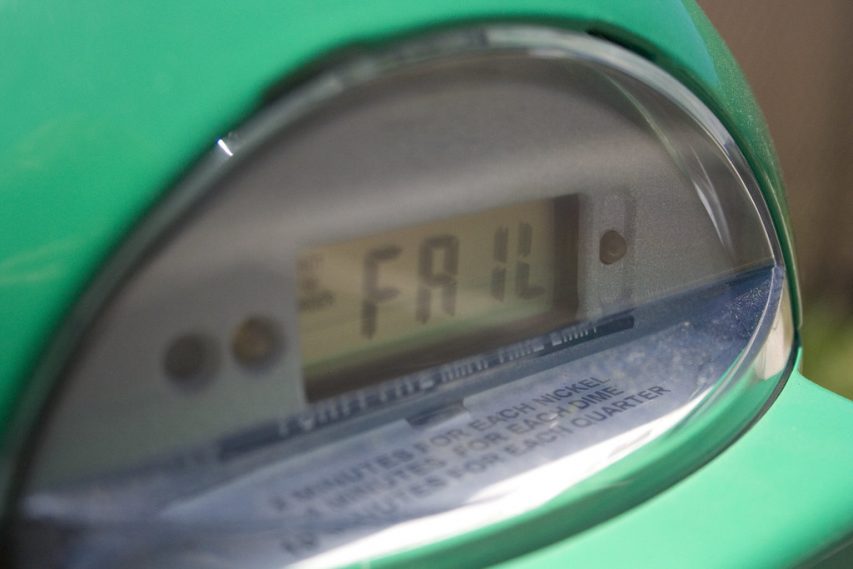
“Parking meter FAIL” by kingdesmond1337 is licensed under CC BY-NC-SA 2.0
One of Frédéric Bastiat’s most famous observations was the importance of recognizing “That which is seen and that which is not seen”. A government agency builds a road, some people get jobs working on the road, voila, look at all the benefits the government has brought us. What is unseen is what would have happened if the government hadn’t taken our resources to build the road, perhaps we would have spent them on something of greater value?
That people often (perhaps usually) overlook the unseen isn’t too surprising, but the inability to see is sometimes striking. A couple of years ago the City of Atlanta decided to get rid of its parking meter enforcement staff and outsource this work to a private sector company (let’s call it NewCo). Some time after the transition there were discussions at the City Council that perhaps they should reverse this decision, or at least find another provider.
What was the source of these complaints? Was NewCo inefficient? Was the City getting less revenue from the meters? No, meter revenues were actually up as were parking ticket revenues. Some misbehavior by NewCo’s employees, bribery, favoritism, kickbacks? No, no, no and no. The problem was that NewCo was doing a better job. Seriously, the City Council was inundated with complaints such as “I was, like, 2 minutes late getting back to my car and they had already ticketed me”. People who had been ticketed as well as many businesses complained about NewCo’s efficiency.
[…]
What really stood out is that no one involved in these discussions – aggrieved parkers or Council members – seemed to think about why we have meters, time limits and tickets. If enforcement is lax, more people overstay their allotted time, one consequence of which is that you have to drive around longer to find a parking space. People notice their parking ticket or the inconvenience of having to run out and feed the meter (that which is seen) but were oblivious to the shortage of parking spaces that is exacerbated by lax enforcement (that which is not seen, or perhaps not identified as connected?).
One wonders how people who live in a City where finding a parking spot is very difficult could “not see” the value of good enforcement. The time spent circling the block, rushing to turn around and grab the space that just opened up before somebody else snagged it, then just missing out and starting the dance over – nobody thought of that? Bueller, anyone?
Emphasis added.
February 8, 2020
Switching over from internal combustion vehicles to electric won’t be cheap … it really won’t be cheap!
At Spiked, Rob Lyons looks at the British government’s recent decision to ban sales of internal-combustion cars in 2035 rather than the earlier target date of 2040:
First, at present, electric vehicles cost a lot more than those with internal-combustion engines. For example, one car-buying advice website notes that the Peugeot e-208 is as much as £6,200 more than the standard 208 model. There are government subsidies to help with the cost of electric cars (currently £3,500), but can this be sustained if we all switch? It has already been cut from £4,500 in 2018.
That said, while the purchase price of an electric car may be higher, charging is a lot cheaper than fuelling a regular car. Electric vehicles cost between £4 to £6 per 100 miles to charge at home and £8 to £10 using public charge points, while petrol and diesel cars cost £13 to £16 per 100 miles in fuel (although 60 per cent of the fuel cost is tax).
In theory, maintenance should be cheaper, too, given that electric motors have fewer moving parts than petrol or diesel engines. But to further complicate matters, batteries gradually lose their capacity to hold charge over time. They have to be replaced at the cost of thousands of pounds every few years. (The warranties covering battery replacement varies by manufacturer: Tesla, for instance, offers an eight-year warranty, but the Renault Zoe is covered for just three years.)
Electric cars may be cheaper to own overall, but this is largely down to subsidies and tax breaks, including lower vehicle duties and not having to pay charges in low-emission zones. Still, with the entire car industry throwing its efforts into making electric cars cheaper and increasing battery capacity, costs may well come down somewhat, reducing the need for such breaks. Fingers crossed.
The cost to individual owners will be higher, but the costs to build up the electric charging infrastructure will be distributed among all consumers, not just the owners of vehicles:
This brings us to perhaps the biggest problem: where will the power come from and how will it reach us? Eventually shifting all the energy for cars from oil to electricity means producing much more electricity. Greens are pleased that electricity use is currently decreasing, and a greater proportion of electricity is coming from renewable sources. But the arrival of electric cars en masse would demand a whole lot more electricity, mostly to be used at night.
Unless we want to coat the landscape in wind turbines, which are unreliable in any event, we’ll need other sources of power. More nuclear? Fine by me. But will eco-warriors stand for that? Even if we can produce the juice, having lots of cars charging in the same area may overwhelm the local electricity networks. Who is going to pay for the upgrade?
When all of these factors are considered we have to ask if all this effort will really reduce greenhouse-gas emissions anyway. Digging up the resources required to create all those batteries will be hugely carbon-intensive. Perhaps the most likely outcome of banning sales of new petrol and diesel vehicles is that demand for second-hand vehicles will go up. We could end up like Cubans, nursing venerable old cars for years, way beyond their intended lifespans.
January 28, 2020
QotD: Drinking and driving
I have another brochure on my desk. Actually, I’ve got a lot of stuff on my desk, including possibly a cat or two, but it’s the brochure that’s at the top of the pile. It comes from the Ontario government and it’s called Break The Law Pay The Price. Personally, I’d have put a comma in there somewhere, but the Ontario government laid off the punctuation guy in a cost-cutting drive. (I gather he lasted longer than the water inspection guy.)
According to BTLPTP, “Drinking drivers are responsible for one-quarter of all people killed on Ontario roads.” In other words, only 75 percent of Ontario traffic fatalities are the work of sober people. Either we have more drunks in Ontario or our sober drivers are better drivers than Britain’s. [Where “one in seven of all deaths on the road involve drivers who are over the legal limit.”]
Now, despite the damning evidence in these brochures that sober people are causing carnage on our roads, the people who know what’s good for us are busy trying to lower the legal blood alcohol limit. Early in 2001 the Quebec government announced that it was lowering the limit from eighty milligrams to fifty, throwing in a complete drinking ban for professional drivers — cabbies, bus drivers, and the like. This last measure was a reaction to — well, nothing at all. Were drunk ambulance drivers creating havoc on the roads of Quebec? No. But it gave the government of Quebec the appearance of having taken a strong stand on something. Predictably, the Ontario government immediately made noises about following suit.
Nicholas Pashley, Notes on a Beermat: Drinking and Why It’s Necessary, 2001.
January 26, 2020
January 25, 2020
QotD: The post-oil-crisis evolution of modern cars
Man I remember back in 1982, we all thought we’d be driving nothing but 3-cylinder diesels by the turn of the millennium. If you went back and told some gearhead in my high school class that in 2017 Dodge would be selling a “street legal” 10-second Hemi Challenger, he’d think you were talking about the 0-60 time of a 4-cyl car.
The computer changed everything. Not only in engine tuning and performance, but in design and modeling.
I had an example of a classic late Dark Ages car, an ’84 Trans Am with the LG4 305c.i. Rochester Quadrabog motor. A hunnert and fifty horsepower and nearly every engine function powered by enough dry-rotting vacuum tubing to reach to the moon and back…
Only a few years later and exotic computer-designed and controlled long-runner port fuel injection systems were common on domestic performance cars and HP numbers were on the right side of 200 for the first time in a decade.
It was coming out of an awful time. Like a friend wrote: When he went into seminary you could buy a Mustang with a nearly 400bhp engine option. When he left seminary, the Mustang was a Pinto.
Being a car enthusiast in America in the latter half of the 70s/first half of the ’80s was like being a dirt farmer in Fifth Century Britain, marveling at the weed-grown roads and disused aqueducts left by a race of giants and building your pig shed with stones looted from a burned library.
Tamara Keel, “Cars of the future from the past…”, View From The Porch, 2017-12-26.
November 25, 2019
More frequent car fires, an unintended consequence of wider adoption of electric vehicles
In Quadrant, Tim Blair recounts the story of a friend crossing the Sydney Harbour Bridge only to find his vehicle was on fire:
Most of us manage to scrape through life with no such flame-related driving incidents. Future motorists, however, may find themselves more frequently enjoying the occasional car-b-que. That’s because electric cars — the things Labor ruinously attempted to force upon us as part of their spectacular 2019 election campaign disaster — seem to be impressively prone to burning.
Now, an ordinary car fire is not really that big a deal. Catch it early enough and it can be quickly dealt with. But a fire involving an electric car is a whole different matter. Those things are like four-wheeled infinity candles.
In the manner of all the money given to its manufacturer by various governments, an electric Tesla recently torched itself in Austria. The Tesla’s fifty-seven-year-old driver had slid off the road and struck a tree, prompting a fire emergency.
In ordinary car blaze cases, a single fire engine or even a personal fire extinguisher is sufficient to deal with the problem. Electric cars, or EVs, demand slightly more attention when combustion occurs. Here’s an online news account:
In order to put out the fire, the street had to be closed and fire authorities had to bring in a container user to cool the vehicle.
Some 11,000 litres of water are needed to finally extinguish a burning Tesla but an average fire engine only carries around 2,000 litres of water.
The container used is said to be suitable for all common electric vehicles. It measures 6.8 metres long, 2.4 metres wide and 1.5 metres high, it is (obviously) waterproof and weighs three tons.
Moreover, “fire brigade spokesman Peter Hölzl warned that the car could still catch fire for up to three days after the initial fire”.
I’ve owned one or two cars that were sensibly equipped with fire extinguishers. Future motorists may wish to tow around a lake, just in case their earth-friendly electric cars decide to go the full kaboom.
October 16, 2019
M3 Halftrack: Strength & Weaknesses (featuring Chieftain)
Military History not Visualized
Published on 4 Sep 2019Sponsored by World of Tanks! Register here ► https://tanks.ly/2zrfzsF to receive a T-127 Premium Tank, 500 Gold and 7 days Premium access with the code
TANKTASTIC. Applicable to new users only.In this video Nicholas “The Chieftain” Moran and I talk about strength & weaknesses of the M3 Halftrack, we also compare it to the German Sdkfz 251 Halftrack.
Special thanks to WW2 Armor for helping with the interview and providing an excellent backdrop, be sure to check out their sites here:
WW2 Armor Channel: https://www.youtube.com/channel/UChM-…
WW2 Armor Homepage: http://ww2armor.org/Chieftain’s Channel: https://www.youtube.com/channel/UCp4j…
D-Day Ohio: https://www.ddayohio.us/
https://www.oorlogsmuseum.nl/en/home/
Thank you to vonKickass for helping with the thumbnail.
»» SUPPORT MHV ««
» paypal donation – https://paypal.me/mhvis
» patreon – https://www.patreon.com/mhv
» subscribe star – https://www.subscribestar.com/mhv» SOURCES «
von Senger und Etterlin, F. M.: Die Panzergrenadiere. Geschichte und Gestalt der mechanisierten Infanterie 1930-1960. J. F. Lehmans Verlag: 1961, München.
amazon.de (affiliate): https://amzn.to/2KNTB9JChamberlain, Peter; Doyle, Hilary: Encyclopedia of German Tanks of World War Two. Revised Edition. Arms & Armour: London, UK, 1999.
amazon.com (affiliate link): https://amzn.to/2Zz2ZlD
amazon.de (affiliate link): https://amzn.to/343naf5Spielberger, Walter; Doyle, Hilary Lous, Jentz, Thomas L.: Halbkettenfahrzeuge des deutschen Heeres
amazon.de (affiliate): https://amzn.to/2KDFrpP
Spielberger: Halftracked Vehicles of the German Army 1909-1945 (Spielberger German Armor and Military Vehicle)
amazon.com (affiliate): https://amzn.to/2IeHwdrDoyle, David: The Complete Guide to German Armored Vehicles. Skyhorse Publishing: New York, USA, 2019.
amazon.com (affiliate link): https://amzn.to/34dIEWS
amazon.de (affiliate link): https://amzn.to/2HvrytC» DISCLAIMER «
As an Amazon Associate I earn from qualifying purchases.Als Amazon-Partner verdiene ich an qualifizierten Käufen.
Come for the interesting profile of the M3, stay for the amusing asides on modelling trains and AFVs.
September 17, 2019
The Curator’s Dingo | The Tank Museum
The Tank Museum
Published on 16 Sep 2019Most Curators don’t own armoured cars… David Willey, Tank Museum Curator, has owned his Daimler Dingo Scout Car for over 20 years. Find out how he came to own it and what he uses it for.
As part of the 75th Anniversary of Operation Market Garden, David will be driving his Dingo in a 200 vehicle convoy retracing the route.
Support the work of The Tank Museum on Patreon: ► https://www.patreon.com/tankmuseum
Visit The Tank Museum SHOP: ► https://tankmuseumshop.org/
Twitter: ► https://twitter.com/TankMuseum
Instagram: ► https://www.instagram.com/tankmuseum/
Tiger Tank Blog: ► http://blog.tiger-tank.com/
Tank 100 First World War Centenary Blog: ► http://tank100.com/



